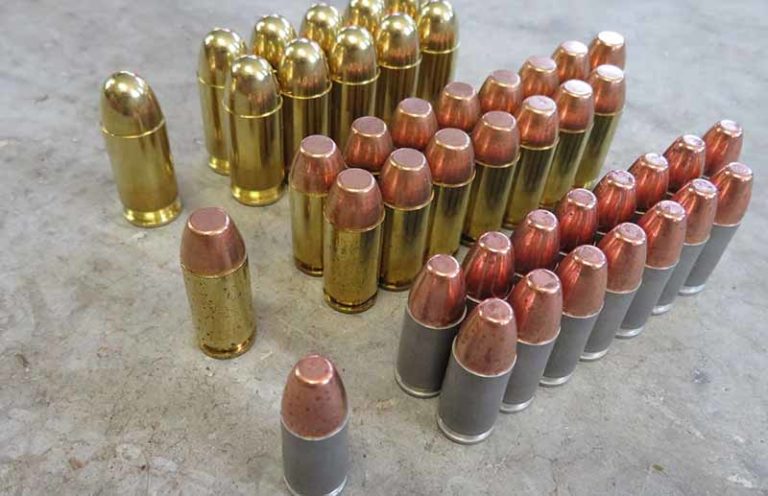
In the eternal debate of .40 S&W Vs. .45 ACP Vs. 9mm, which cartridge reigns supreme for concealed carry and self-defense?
So now that we know a bit about the specifications and data for the 9mm cartridge, what is it that makes it so popular? It does not have stellar, tack-driving accuracy like other pistol calibers, nor does it have the power of other cartridges. It is far from the perfect cartridge but is still the most prevalent worldwide. Even science gives the 9mm low marks compared to larger calibers.
It’s simple physics. A bigger, heavier bullet carrying more energy means a deeper and larger wound channel. So why is the 9mm king? There are three reasons: Shootability, increased magazine capacity, and ammunition choices.

Before we get into these, let’s talk physics and math. A light projectile sheds velocity and energy faster than a heavier one. More velocity equates to more energy. More energy factors into the amount of penetration, which affects terminal performance. Energy is the benchmark by which we rate a bullet’s performance. To sum up this fast physics lesson: all things being equal, a larger, heavier bullet will penetrate deeper than a lighter one.
The move to the 9mm was not an instant success, as the Illinois State Police learned. As mentioned in an earlier chapter, they were one of the first U.S. law enforcement agencies to adopt the 9mm in the Smith & Wesson Model 39. The standard-issue round was either 100- or 115-grain, standard velocity. The load was mediocre at best as the troopers found out, but when they changed to 115-grain hollow-point +P+, those .380-inch bullets leaving the muzzle of their Model 39s at a velocity of 1,300 fps changed the game. The initial 9mm rounds at the time used by law enforcement did not yet reach the nine’s full potential.
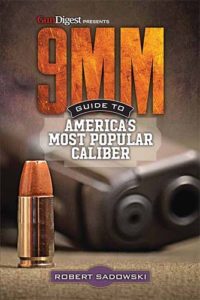
One of the issues our military experienced with the 9mm was dissatisfaction with the M9 pistol specifically and ammunition in general. It boiled down to a report compiled by the Center for Naval Analyses (CNA) and released in 2006 titled, “Soldier Perspectives on Small Arms in Combat.” The report detailed a formal independent review of soldier opinions of their small arms in combat situations. Specifically, the Project Manager, Soldier Weapons (PMSW) wanted to know soldier perspectives on the reliability and durability of the M9 pistol, as well as the M4 and M16 (A2 and A4) rifles, and the M249 light machine gun. These four weapon systems are the standard-issue guns being used by Army soldiers in Iraq and Afghanistan.
Just to level set the results, weapon reliability is defined as “soldier level of confidence that their weapon will fire without a stoppage in the combat environment.” Weapon durability is defined as “soldier level of confidence that their weapon will not suffer breakage or failure that necessitates repair before further use.” Survey participants included over 2,600 soldiers who had returned from Iraq or Afghanistan and who had engaged in a firefight using the weapons listed.
The net result was that soldiers were least satisfied with the M9 compared to the other weapons and “the most frequent recommendations included weapons and ammunition with more stopping power/lethality; higher quality magazines for the M9, M4 and M16; more durable ammo belt links and drum systems for the M249; and reduced size and weight in the M16 and M249.”
Call it lethality, stopping power or knock-down power, but there is no such thing as a caliber with this magic attribute. The truth is a combination of bullet placement and design, and follow-up, are what stop a threat. If a shooter does his job and places the shot accurately the 9mm can stop a threat. Our bodies can take an enormous amount of punishment. Our organs can move around inside us, so what might have been a good hit is not. There are numerous examples of people who are shot in a gunfight and did not realize they were hit until after the fight was over.
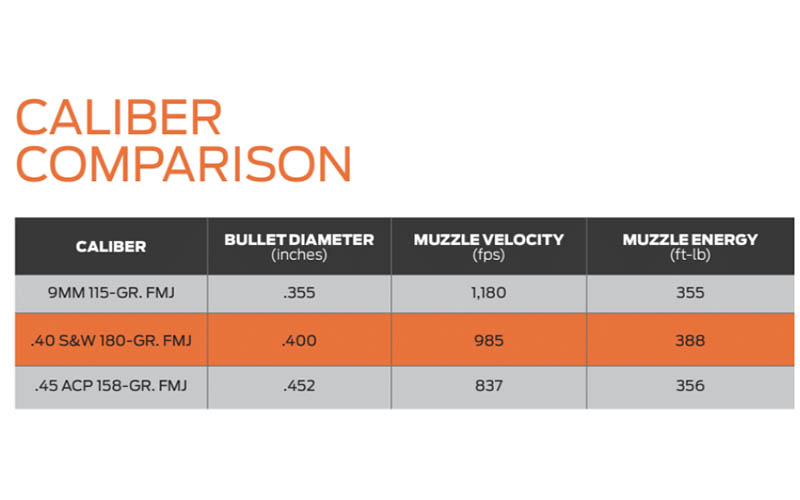
It may be ironic that the Mozambique Drill is a technique used with a Rhodesian mercenary, Mike Rousseau, during the Mozambican War of Independence from 1964 to 1974. Rousseau was fighting at the airport at Lourenço Marques, which is now called Maputo. He turned a corner and came face-to-face — about 10 paces — with a FRELIMO guerrilla armed with an AK-47. Armed with a Browning HP35 pistol chambered in 9mm, Rousseau immediately brought up his Hi Power and shot the guerrilla twice in the chest.
This was a traditional “double tap” maneuver. According to Rousseau during a conversation with Jeff Cooper, Rousseau hit the guerrilla on either side of the sternum, which is typically sufficient to kill a man. Yet the guerrilla was still advancing, so he tried for a headshot and instead hit the guerrilla through the base of his neck, severing the spinal cord. Cooper, the founder of the Gunsite Academy shooting school and father of the “modern technique” of pistol shooting, decided to incorporate a drill similar to what Rousseau had experienced. Cooper called it the “Mozambique Drill.”
The drill has you fire the first two shots to the center of mass and then a slight pause. The pause allows you to assess the situation and determine if a third shot is needed to the head. The drill has since been renamed Failure Drill or Failed to Stop Drill due to political correctness. No doubt Cooper is rolling over in his grave over that, since he had no patience for political correctness — only fast, precise shooting.
I’ve talked to some recent veterans who have combat experience with the M9 and, according to some of them, the reason it has a 15-round magazine is that you need two shots to immobilize an opponent. That is due to the M882 cartridge, the U.S. military load for the 9mm—not the handgun itself. The military has plans to change the 9mm load and may even walk away from the FMJ ball ammo and use a more effective bullet.
With no further ado, here are the reasons the 9mm beats all other cartridges for combat and self-defense.
Shootability
When the 10mm Auto was dropped by the FBI in favor of the .40 S&W, law enforcement agencies nationwide followed suit and shifted to the .40, dropping the 9mm in what seemed like the blink of an eye. Even so, for most LE agencies the breakup with the nine would be short. The .40 S&W had what they wanted: a larger bullet at a higher velocity that created a larger and hence more lethal wound channel. At one time, manufacturers were introducing pistols in .40 S&W first and then following up with the same handgun chambered in 9mm. The H&K USP model is an example. Today, the .40 S&W might be considered, but now most handgun manufacturers introduce 9mm first, then .40 S&W and maybe .45 ACP.
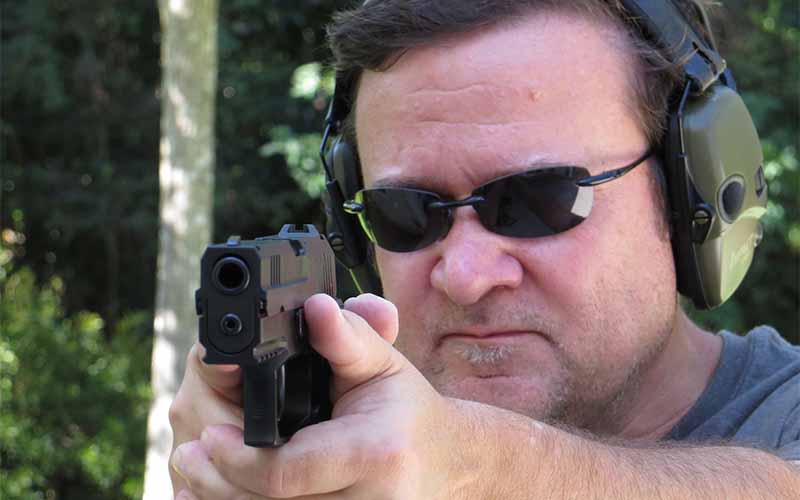
The .45 ACP has been in use with our military since WWI and is a proven combat caliber. The problem with it is recoil. Even with full-size, steel receiver pistols like the 1911, the .45 ACP is a handful to control. Pistols chambered in 9mm — from subcompacts to full-size models — have less recoil and that translates into you shooting the pistol better. Better shooting means better accuracy. Faster follow-up shots are one of the 9mm’s greatest benefits.
Load Up On More 9mm Knowledge:
- Best 9mm Pistol Options for Every Shooter’s Needs
- Best 9mm Carbines – Top Choices for Every Shooter
- Best Single Stack 9mm Pistols for Concealed Carry
- Top Compact Double Stack 9mm Pistols for Everyday Carry
- Smallest 9mm Handguns for EDC
.40 S&W Vs. .45 ACP Vs. 9mm: Magazine Capacity
Additional magazine capacity of the 9mm is a benefit over the .40 S&W and .45 ACP. For example, look at the Smith & Wesson M&P series. The M&P 9 has a capacity of 17+1 rounds. The M&P 40 has a capacity of 15+1, and the M&P 45 has a 10+1 round capacity. The 9mm offers less reloading and more shooting — something to think about if you get into a gunfight. The ability to confront multiple threats with more firepower and not have to take time to reload is a plus. Most who carry do not have spare ammo on them (they should). Concealing a 9mm pistol means more rounds on hand.
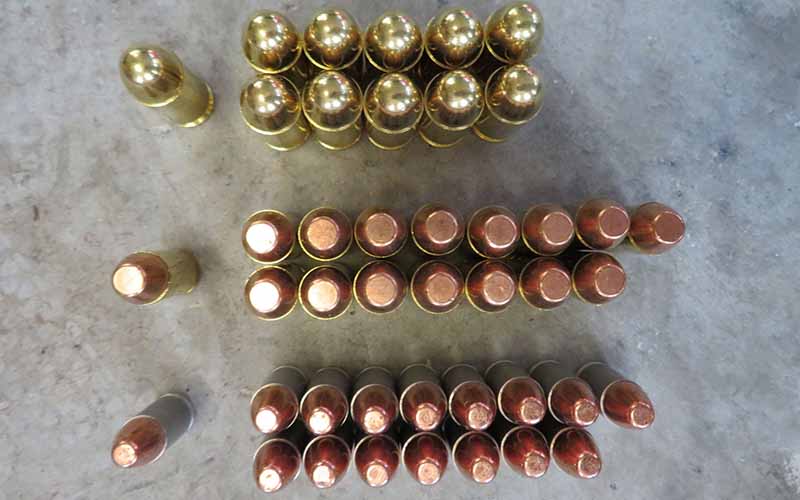
Ammunition Choices
Since the 9mm is so popular there are many bullet options loaded by nearly every ammunition manufacturer. From fast 115-grain ammo to slower and heavier 147-grain rounds, the 9mm offers choice. The cost of 9mm ammo is less than .40 S&W and .45 ACP. Plus, it is easy to find 9mm ammo at nearly any store that sells ammunition. That means you can train more often and longer for less cost.
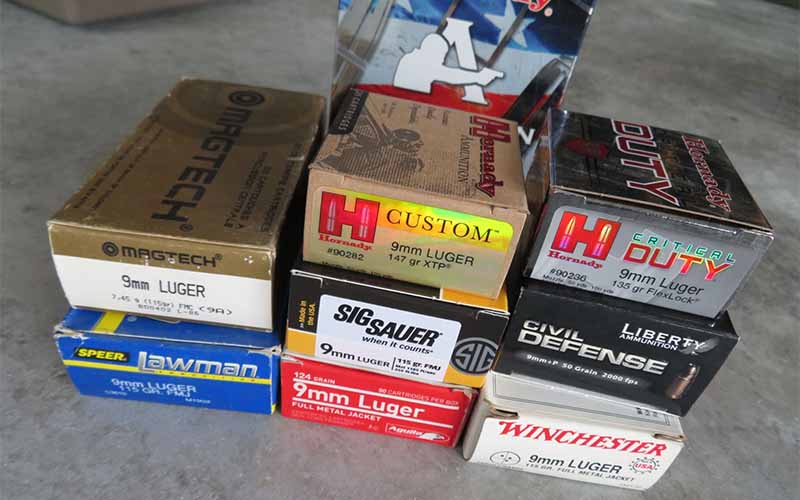
The 9mm was once embraced, tossed aside, and now embraced again. It’s not a compromise cartridge — you now have more round capacity with bullets that provide wound cavities pacing those caused by larger cartridges. Times have changed and so has the 9mm.
Editor's Note: This article is an excerpt of 9mm: Guide to America’s Most Popular Caliber.
More Handgun Ammo Debates:

Next Step: Get your FREE Printable Target Pack
Enhance your shooting precision with our 62 MOA Targets, perfect for rifles and handguns. Crafted in collaboration with Storm Tactical for accuracy and versatility.
Subscribe to the Gun Digest email newsletter and get your downloadable target pack sent straight to your inbox. Stay updated with the latest firearms info in the industry.

![Best Concealed Carry Guns In 2025 [Field Tested] Wilson Combat EDC X9S 1](https://gundigest.com/wp-content/uploads/Wilson-Combat-EDC-X9S-1-324x160.jpg)


![Best 9mm Carbine: Affordable PCCs [Tested] Ruger Carbine Shooting](https://gundigest.com/wp-content/uploads/Ruger-Carbine-Shooting-100x70.jpg)
![Best AR-15: Top Options Available Today [Field Tested] Harrington and Richardson PSA XM177E2 feature](https://gundigest.com/wp-content/uploads/Harrington-and-Richardson-PSA-XM177E2-feature-100x70.jpg)

“Even with full-size, steel receiver pistols like the 1911, the .45 ACP is a handful to control.” Really? Possibly for a novice shooter with really small hands and weak wrists. Recoil management is a learned skill but it isn’t difficult to master, though it does take range time. While I admit the 10mm Auto isn’t the ideal EDC for everyone, I run Mozambique drills with a a 1911 in 10mm with no problems. Reading some articles and forums these days it seems like some shooters may be getting more sensitive to recoil. Guess that explains the 30 Super Carry.
I’ve spoken with many Ex LEO friends and their friends and a few Ex FBI agents at many gun shows and every one of them said the same thing the only reason the 9mm was chosen by the FBI and LEO was not because the 9mm was a better choice because they all said it wasn’t, it was because there agents and officers were only hitting their targets 30 % to 20% or even less of the time that’s right (look up on the FBI report) which they the LEO and FBI agents said was due to the recoil of the 40SW and 357Sig and they also said wear and tear on the gun.
So rather than offering better training for their officers and agents with the 40SW and 357sig and 45ACp (which was advised by several agencies) which all the Ex LEO and a few Ex FBI agents all said would be better (which is common sense because they do need it) they went back to the 9MM anyway and all of them said it was under gunning there agent’s and LEO’s.
What they also tried to emphasize on in their report that with the new technology of powders and bullet design for the 9MM the 9mm was equal to the 40SW and 357SIG
What they failed to talk about and explain was that the standard 9MM LEO and FBI round is now a 9+p or a +p+ round.
Know that so called recoil wear and tear that they blamed on the 40sw, 357sig, 45ACP is just as bad even worse with the 9MM then it was with the 40SW and 357SIG and 45ACP.
And for all the people who keep saying with today’s new bullet technology and new powders the 9MM is now better and faster round, well guess I hate to break your bubble but that same great bullet technology and new powders also went into making the 40 SW, 357SIG and the 45ACP also a better round. Just look at how now there a making 45acp + p rounds and 40SW rounds going 50-75 FPS faster and that’s something that was never heard of ten-15 years ago.
All the ones I spoke with said the 40SW and 357 sig and 45ACP were both much better and a more powerful round at taking down people especially the 40SW and the 357 sig when loaded to where it originally was supposed to be (which originally was 1,450 -1500feet per second) for a 125 GR bullet they (ammo manufacturers) watered it down to 1350-1365FPS yet it still out performs any 9mm+p and the 9MM +P+ round) and yet they the FBI and LEO still opted to go with the less powerful 9mm 9mm+p and the 9MM +P+ which they all have said was under gunning there officers to a less lethal round, and they would have been better off having better training for some and an option to choose their caliber for each individual.
Please watch the following 2 videos below in their entirety and just maybe if you can put politics aside you will understand how the 9mm though a good round and can get the job done but in most cases is not the perfect defense round and the 357sig and 40SW and 45ACP are truly still a better round for those wo can take the time to master it like they should for whatever round they choose.
https://www.youtube.com/watch?v=U4DsaBrohV0
https://www.youtube.com/watch?v=LTTDgZZZFa0
Good article but I’m not convinced.
I used the 1911 in Vietnam. It worked. I still carry a 1911 in 45acp with FMJ.
It’s worked for over 50 years for me and I trust the 1911 and FMJ can’t see changing course.
Commendable article with great points. I know that you addressed it partially in the “Ammunition Choices” section, but I’d have argue that COST was a principal factor in why the .40 gave way to 9mm in recent years. Although, it is partially true that there are not dramatic differences in terminal effectiveness in most handgun calibers, let’s be honest. For the reasons cited, most .40 cal is superior to 9mm, all other factors being equal. The FBI and LE dumped .40 for 9mm for shootability and to reduce their budgets. More costly ammo that caused short lifespans on their Glocks cannot be ignored. With respect to .357 SIG, it is certainly an excellent caliber but not necessarily superior to the best .40 cal with heavier bullets. .357 SIG merely trades bullet weight for velocity. We shouldn’t be fooled by instrumental “energy” figures. They can be misleading. Overall, great article!
Nowadays it would be nice for this old “trio” to be updated. The 357 Sig is a very viable carry option – I carry a Glock 32 in my pocket and when the need for two arises, I add a Glock 31 to my hip. It has less recoil that the 45 and more power than any of the “trio.” My “carry” ammo has 544 ft lbs and it is not the hottest ammo I have by far. 357 Sig literally blows away 9mm, 40, and 45 and is as shootable as the 40. I am not alone – many of us are carrying 357 Sig. Also, the performance is much better in terms of wound channel, depth, and medical reports (though there are not many medical history reports around). And, BTW, it is not any more expensive than 45 ammo, sometimes less.
There may be a good reason a lot of handguns were initially offered in .40 S&W. For one the police market at the time. But most importantly the .40 S&W has a higher recoil impulse which is harder on a handgun- if you develop a handgun for a .40 S&W it will certainly stand up to 9mm recoil- not always the other way around take a look at the Browning High-Power in .40 S&W, they are notorious for breaking frames.